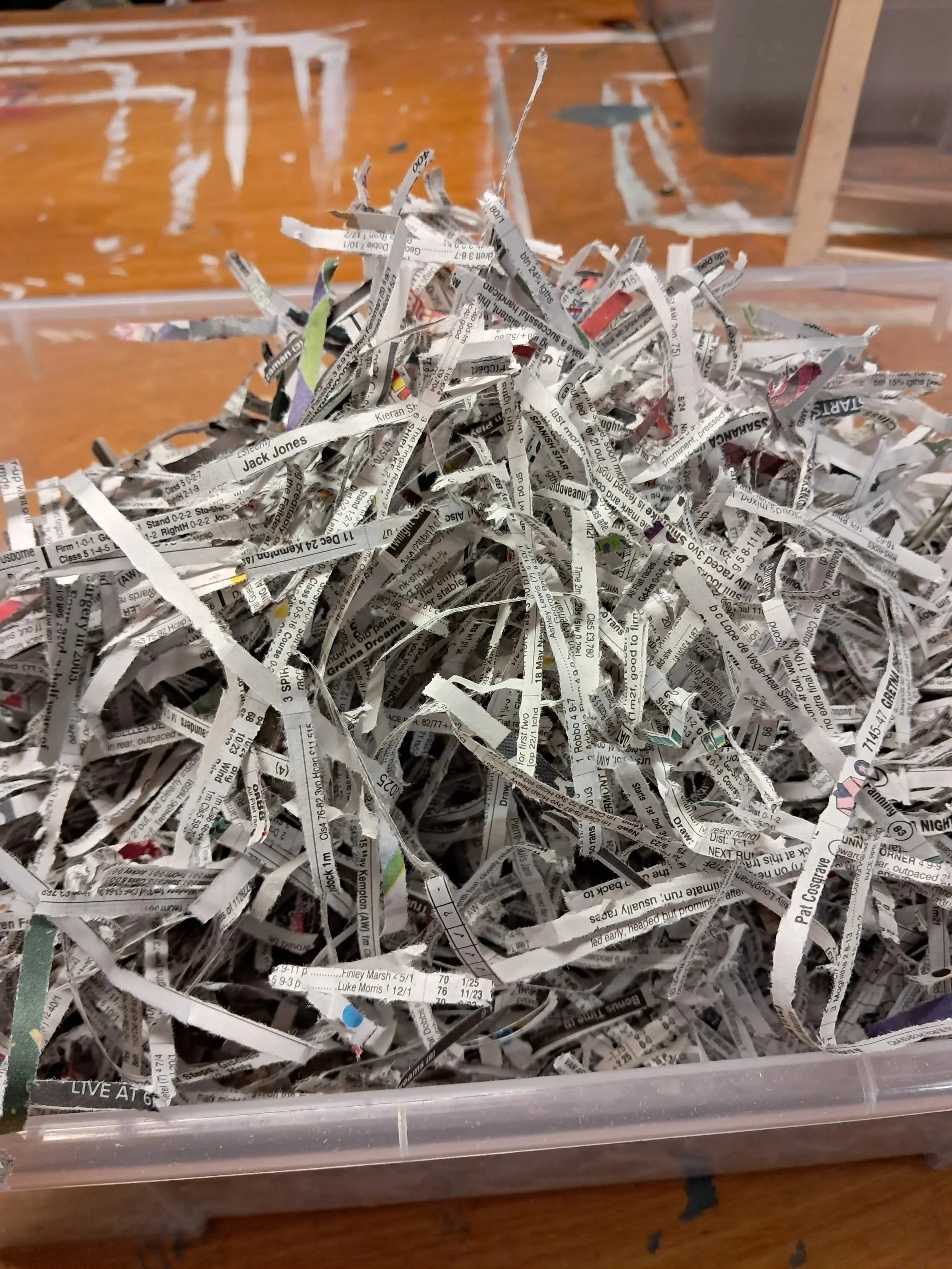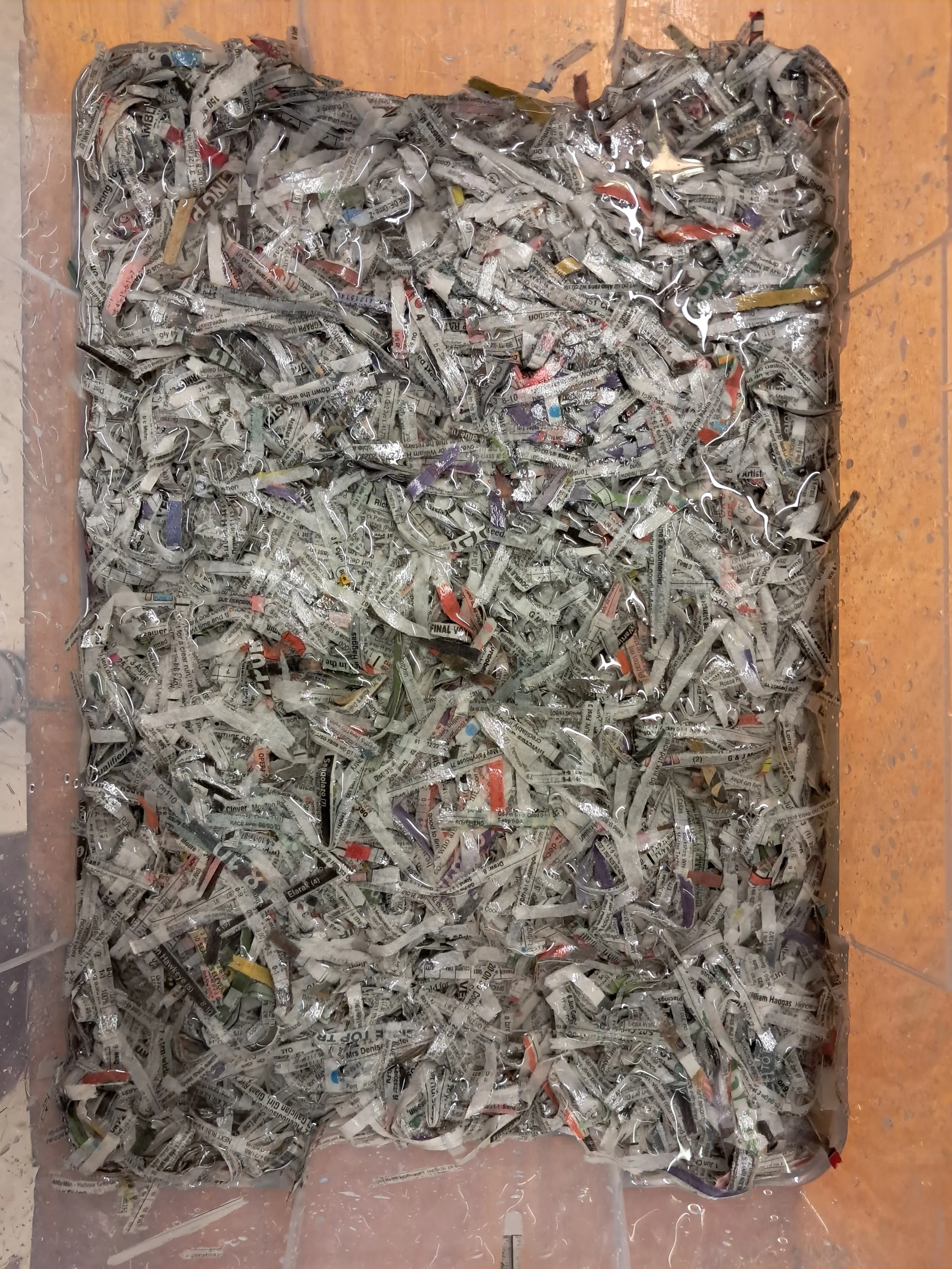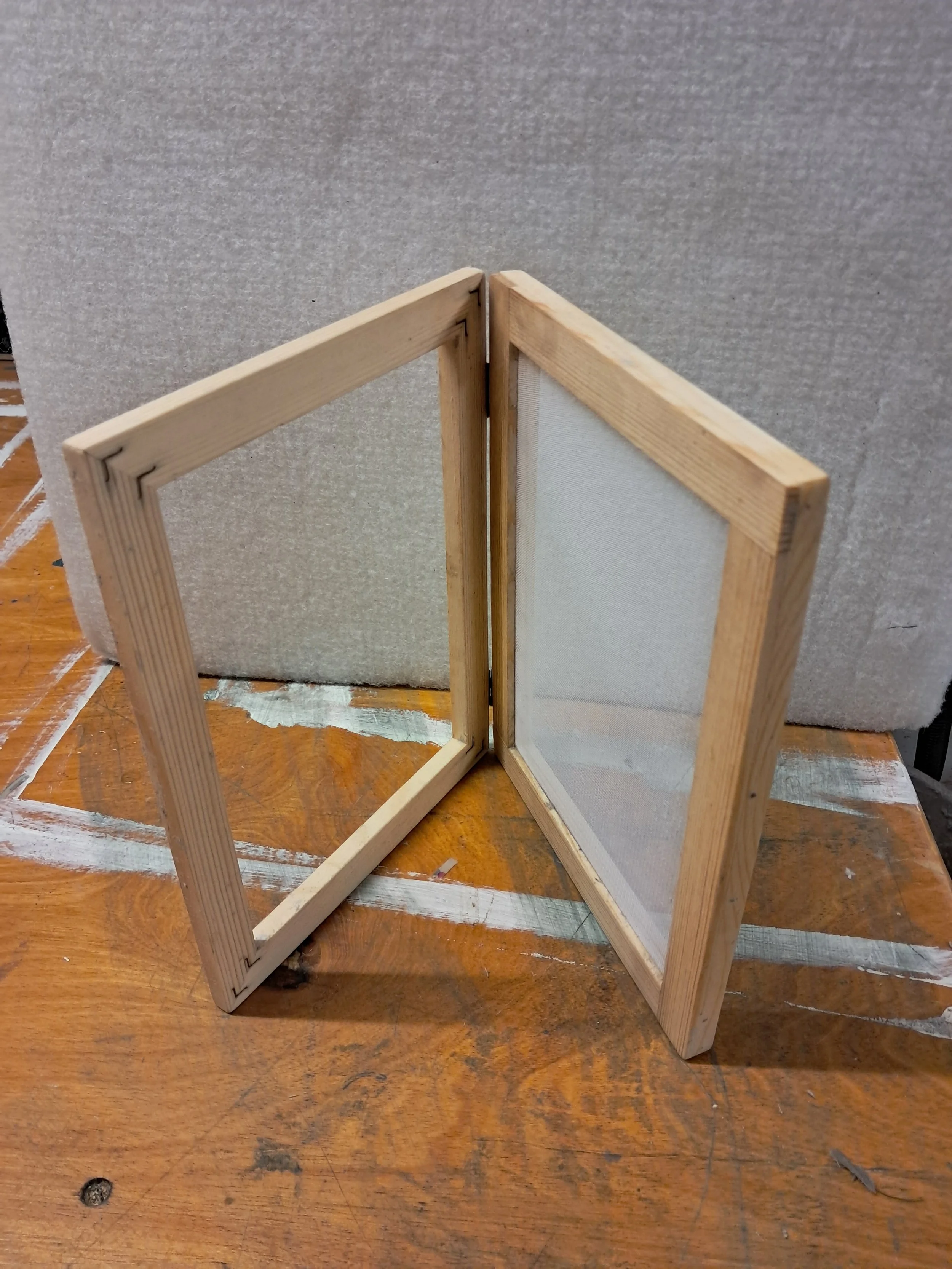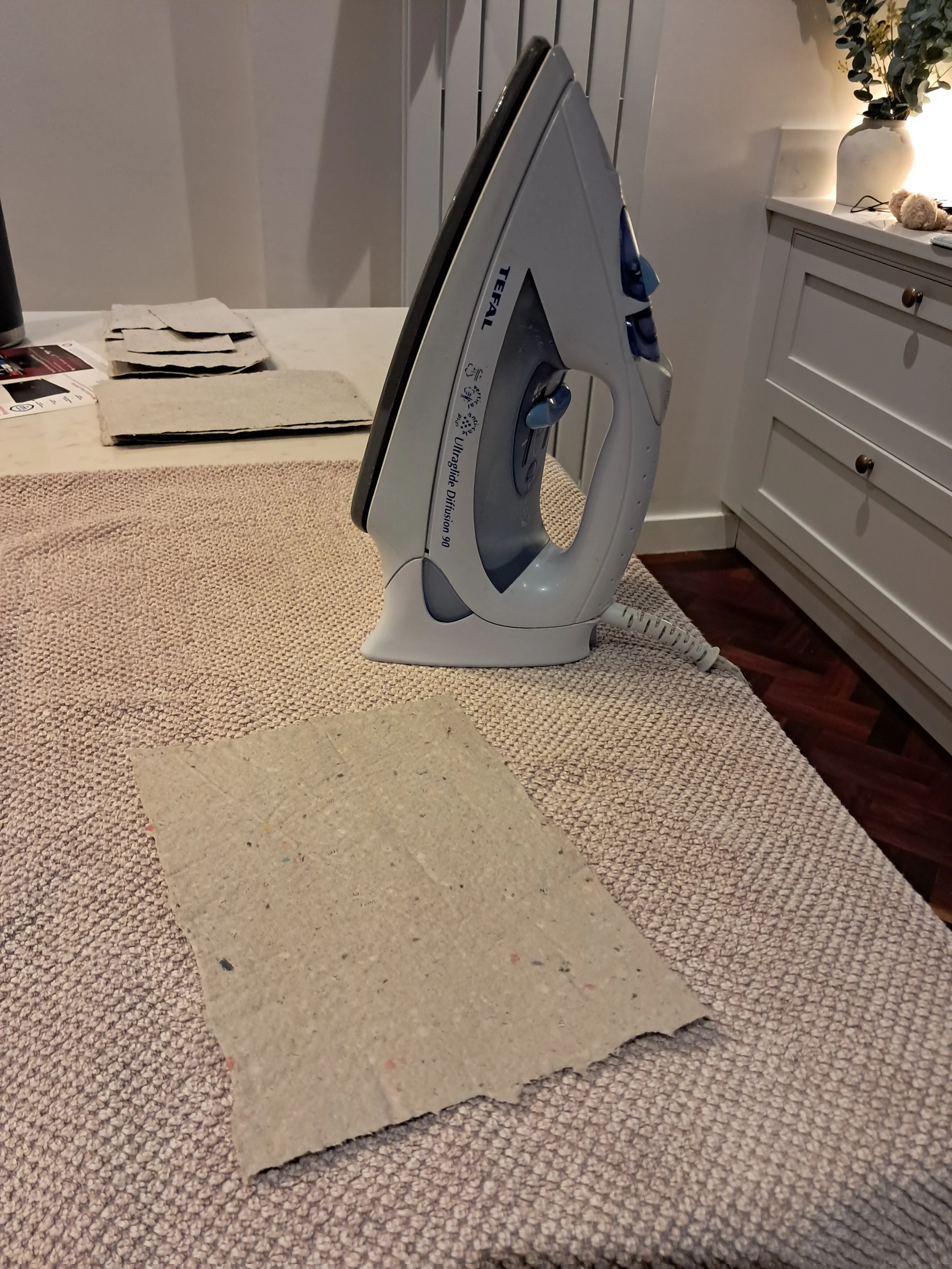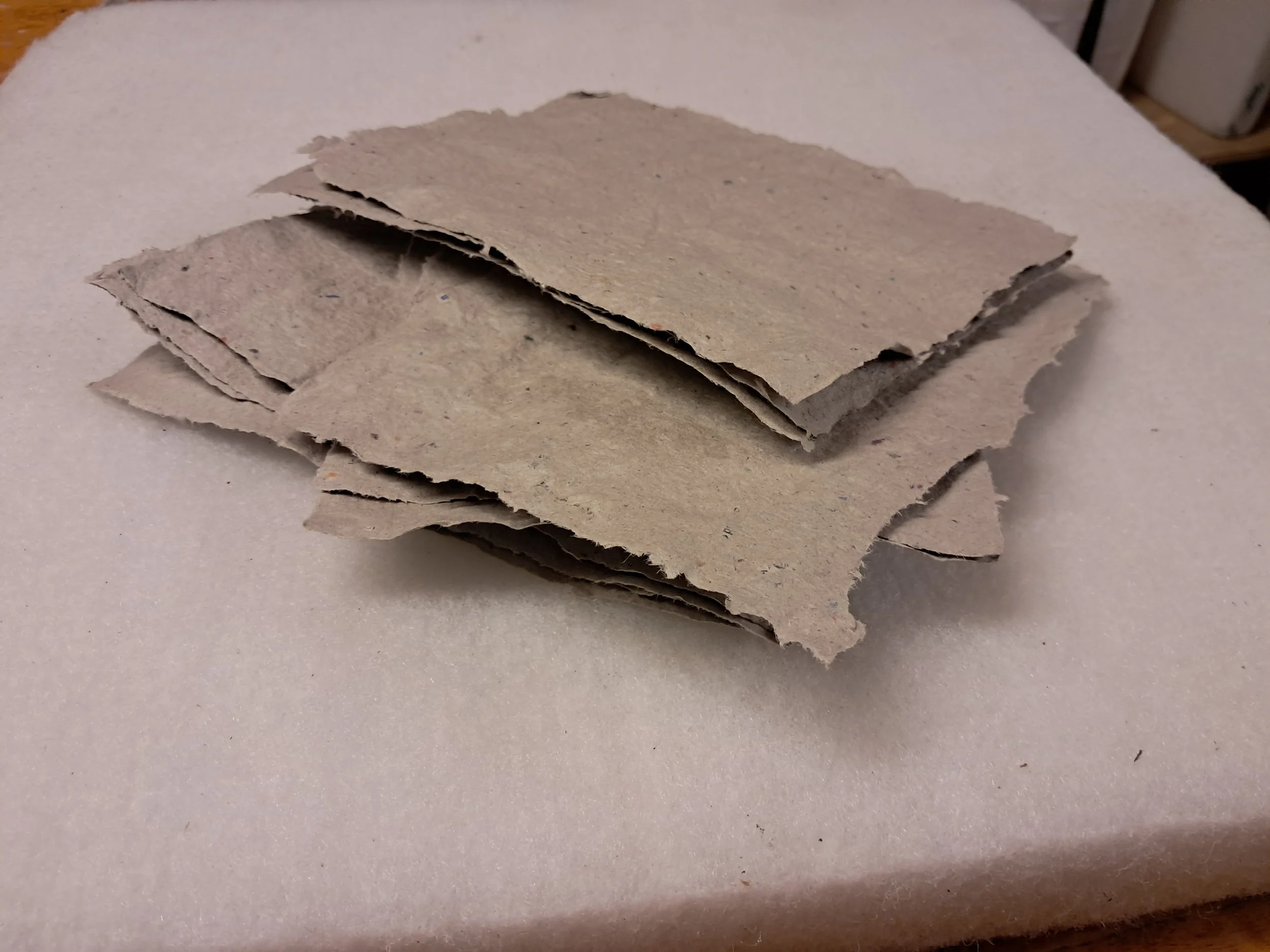Turning Old News into New Art
Making Handmade Paper for Journeys
Over the past couple of weeks, I’ve been working on something a bit different in the workshop – making my own recycled paper using old newspapers. It’s part of a broader idea I’ve had for a while: using what I already have, repurposing old materials, and creating something new and meaningful out of them. This all ties into my upcoming exhibition Journeys, which opens soon in the Presentation Arts Centre in Enniscorthy.
The exhibition is about movement, change, and stories — and I wanted the work itself to reflect that, not just in the subject matter but in the process and materials too. So I started thinking: could I make my own paper from scratch, using nothing more than scrap and tools already in the garage?
Shredding the Past
First up: the raw material. I used old newspapers — plenty of them knocking around. I ran them through a regular office shredder to get them into thin strips. It’s a bit of a noisy job but oddly satisfying, watching all that old information, headlines, and tiny print get chewed up into something that looks like it’s ready to become something else.
From Shreds to Pulp
Once shredded, I soaked the paper overnight in a big tub of water. This step is crucial. It softens the fibres and makes it much easier to turn it into pulp. The next morning, I used a plaster mixer attachment on a drill (just a standard paddle mixer I already had) to blitz the mixture. A few minutes of blending and I had a nice even pulp — kind of like a thick grey porridge. Not the most appealing look, but it works!
Making the Mould & Deckle
For forming the paper sheets, I made a simple mould and deckle out of scrap timber from the workshop. It’s basically two wooden frames the same size — one with mesh stapled across it (the mould) and one without (the deckle, which just helps shape the edges). I hinged them together so I could use them more easily. It’s a simple setup but works really well.
Forming the Sheets
To make the sheets, I added a few scoops of pulp into a tub of water and gave it a good mix. Then I dipped the mould and deckle into the slurry, gently swishing it side to side to get an even layer across the mesh. I lifted it out, let the water drain off, then carefully removed the deckle and transferred the wet sheet onto a piece of felt using the couching method (basically flipping it onto the surface).
I repeated the process until I had a stack of fresh, soggy paper.
Drying and Flattening
Drying was a bit of trial and error. In the end, I set up a makeshift drying rack with an old clothes rail and a small table fan pointed at it. It worked surprisingly well. Once they were dry, the sheets were a bit wrinkly (as expected), so I ironed them flat with a standard household iron and placed them under a few heavy books to press overnight.
The final result? A stack of beautifully imperfect, soft grey paper with bits of text and colour still visible — echoes of their past life as newspaper. Every sheet has its own character.
Dried Recycled Paper ready for printing - Justin Codd Photography
Printing the Images
Once I had my paper, I printed some of my analogue photographs onto it. The texture really adds something — it gives the images a ghostly, layered feel, which I love. It’s not the crisp perfection of commercial paper, but that’s the point. These pieces feel like they’ve lived a life. Like they’ve been somewhere and come back changed.
Why It Matters
This project isn’t just about being eco-friendly (though that’s a nice bonus). For me, it’s about the journey — taking something that was once discarded or forgotten and giving it a new purpose. That’s very much in line with the themes of the Journeys exhibition: memory, movement, transformation.
I love the idea that the paper holding these prints already had a life. Maybe someone read about a local match, a birth notice, or a piece of breaking news — and now that same paper is part of an artwork.
It’s also a reminder that you don’t need fancy materials or expensive tools to create something worthwhile. Everything I used was either lying around the workshop or destined for the recycling bin.
Come See the Work
If you're around Wexford, the exhibition Journeys opens soon (August 2025) in the Presentation Arts Centre, Enniscorthy. I’d love for you to drop by and see the finished pieces — and maybe even have a chat about the process.
Sometimes the best materials are the ones we already have. You just have to look at them differently.

